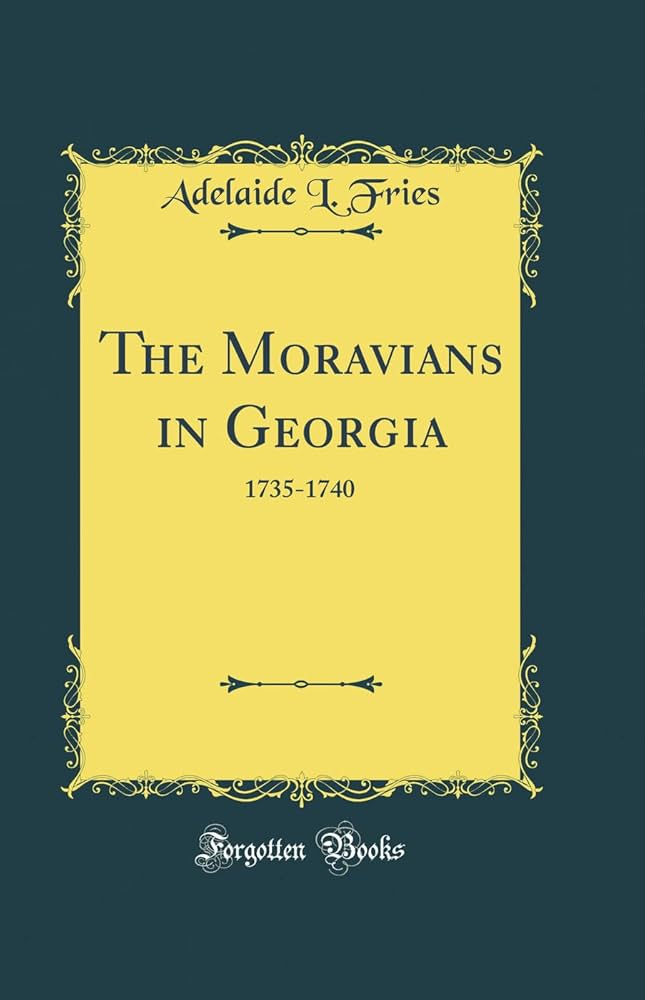Chapter III — The First Year in Georgia
byChapter III — The First Year in Georgia marks a time of intense labor and hopeful ambition for the newly arrived Moravians. Spangenberg, alongside his fellow Brethren, was filled with a deep sense of purpose and gratitude as they set to work constructing their new settlement. Each day was met with the same spirit of determination, their hands moving swiftly to complete the communal house that would shelter them through their first uncertain months. Timber was gathered, nails were pounded, and plans were drawn with both faith and practicality guiding every decision. Their shared belief in divine provision bolstered their spirits, even as the Georgia heat bore down and the tasks mounted.
Progress came steadily, thanks to the unity and cooperation among the group. The construction became more than a building project—it was a symbol of their resolve to live differently, governed by peace, humility, and brotherhood. As the walls of the house rose, so too did their confidence that this place could become a refuge of faith and fellowship. Yet, not all was easy. The challenges of unfamiliar climate, sickness, and cultural differences with neighboring settlers made clear that the journey would require endurance. Nevertheless, they welcomed their arriving Brethren with open arms, eager to strengthen their numbers and build a lasting witness in the New World.
The Moravians didn’t come to Georgia simply to survive—they came to live out their faith in visible, practical ways. Each morning began with prayer and song, and then the community turned to their various duties: tending gardens, crafting tools, and engaging in trade. Efforts were also made to learn local languages, especially for those preparing to engage in missionary work among the Native American tribes. The settlers believed that through service and kindness, they could demonstrate the love of Christ more powerfully than words alone. This year became their training ground, not only for skills of survival but for the shaping of character through communal life and spiritual discipline.
As days turned into weeks, their health and strength were tested. New illnesses emerged, likely from both the damp environment and exposure to unfamiliar pathogens. Some were confined to their beds, cared for by others with patience and prayer. Still, no one was abandoned, and no work was left undone for long. Their motto, “In essentials, unity; in non-essentials, liberty; in all things, love,” was not just spoken—it was lived. The bonds formed during these trials became the backbone of their spiritual identity in Georgia.
In addition to physical trials, spiritual tensions occasionally surfaced. Differing interpretations of doctrine, especially around how to integrate with the larger Protestant community, sparked quiet debates. Spangenberg navigated these with humility, seeking peace without compromising the mission’s core values. He wrote letters back to Herrnhut detailing their progress and requesting guidance, reinforcing the idea that their community, though separated by oceans, was still part of a larger whole. The humility with which they approached both conflict and cooperation helped to define the tone of their ministry in the colony.
The Moravians also began their outreach efforts beyond their own group. They forged respectful relationships with local Indigenous communities, not with the aim of control but of shared understanding and mutual trust. Early interactions were built on listening and helping, rather than preaching first. This approach, though slow, laid a foundation for longer-term trust, distinguishing the Moravians from many other settlers of the time. In every action, they sought to reflect peace and compassion, believing these to be more effective than argument or power.
Despite the many hardships, their first year in Georgia was considered a spiritual victory. Though their numbers were small and their external influence limited, the internal strength of the community flourished. It was clear that their foundation had been laid not only in brick and timber but in faith and fellowship. This chapter in their history remains a testament to what can be accomplished when conviction, cooperation, and courage are met with compassion. As the year drew to a close, the Moravians looked not to what they had endured, but to what still might be achieved through God’s leading.

